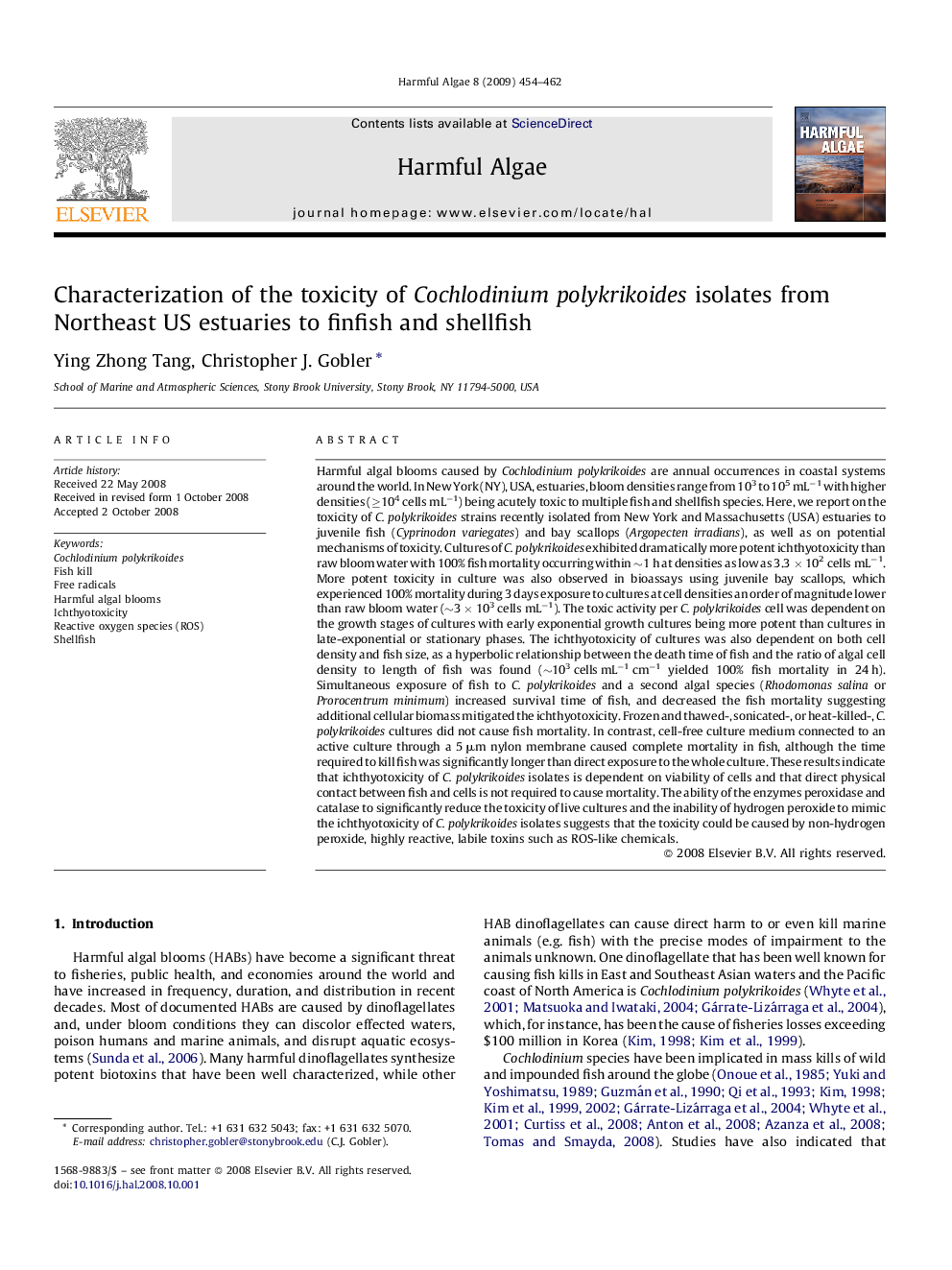| Article ID | Journal | Published Year | Pages | File Type |
|---|---|---|---|---|
| 4545821 | Harmful Algae | 2009 | 9 Pages |
Abstract
Harmful algal blooms caused by Cochlodinium polykrikoides are annual occurrences in coastal systems around the world. In New York (NY), USA, estuaries, bloom densities range from 103 to 105 mLâ1 with higher densities (â¥104 cells mLâ1) being acutely toxic to multiple fish and shellfish species. Here, we report on the toxicity of C. polykrikoides strains recently isolated from New York and Massachusetts (USA) estuaries to juvenile fish (Cyprinodon variegates) and bay scallops (Argopecten irradians), as well as on potential mechanisms of toxicity. Cultures of C. polykrikoides exhibited dramatically more potent ichthyotoxicity than raw bloom water with 100% fish mortality occurring within â¼1 h at densities as low as 3.3 Ã 102 cells mLâ1. More potent toxicity in culture was also observed in bioassays using juvenile bay scallops, which experienced 100% mortality during 3 days exposure to cultures at cell densities an order of magnitude lower than raw bloom water (â¼3 Ã 103 cells mLâ1). The toxic activity per C. polykrikoides cell was dependent on the growth stages of cultures with early exponential growth cultures being more potent than cultures in late-exponential or stationary phases. The ichthyotoxicity of cultures was also dependent on both cell density and fish size, as a hyperbolic relationship between the death time of fish and the ratio of algal cell density to length of fish was found (â¼103 cells mLâ1 cmâ1 yielded 100% fish mortality in 24 h). Simultaneous exposure of fish to C. polykrikoides and a second algal species (Rhodomonas salina or Prorocentrum minimum) increased survival time of fish, and decreased the fish mortality suggesting additional cellular biomass mitigated the ichthyotoxicity. Frozen and thawed-, sonicated-, or heat-killed-, C. polykrikoides cultures did not cause fish mortality. In contrast, cell-free culture medium connected to an active culture through a 5 μm nylon membrane caused complete mortality in fish, although the time required to kill fish was significantly longer than direct exposure to the whole culture. These results indicate that ichthyotoxicity of C. polykrikoides isolates is dependent on viability of cells and that direct physical contact between fish and cells is not required to cause mortality. The ability of the enzymes peroxidase and catalase to significantly reduce the toxicity of live cultures and the inability of hydrogen peroxide to mimic the ichthyotoxicity of C. polykrikoides isolates suggests that the toxicity could be caused by non-hydrogen peroxide, highly reactive, labile toxins such as ROS-like chemicals.
Keywords
Related Topics
Life Sciences
Agricultural and Biological Sciences
Aquatic Science
Authors
Ying Zhong Tang, Christopher J. Gobler,
